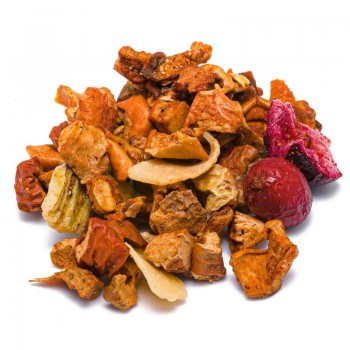With a slightly pungent and delicious flavour, the infusion offers an exciting variation in the variety of ingredients. It contains many aromatic nuances, from the intense and sweet note of apple to the acidic and floral hibiscus; up to the citrus taste of orange peels. The leaves enhance the earthy and appetizing component of liquorice, evoking autumnal flavors and warming infusions throughout the day. Flavors that give a seductive delicacy, full of character, to this blend of fruit and herbs.
Apple and prickly pear infusion: properties and benefits
This variety of infusion gives the properties of apple and liquorice, for the well-being of the digestive system. It supports proper digestion and healthy gut bacteria, reducing intestinal irritation and calming the stomach. An action that can help prevent digestive problems such as constipation and bloating, heartburn, acid reflux and indigestion. Furthermore, it purifies toxins by facilitating the transit of food along the intestine.
Thanks to the elements of hibiscus and licorice they also help in purification through diuresis. The astringent qualities of the tannins of blackberry leaves, combined with the other ingredients, help to tone the mucous membranes, facilitating well-being against gastrointestinal irritations. Blackberry leaf infusion is known as a natural remedy against diarrhea, and when mixed with anti-constipation apple it creates a perfect balance. With these soothing nutrients for the mucous membranes, it also becomes an infusion that relieves sore throats, sore gums or canker sores.
Thanks to the contribution of licorice, the infusion is also suitable for treating cold and upper respiratory tract congestion as a natural remedy. Traditionally, blackberry leaves are beneficial for their content of vitamin C, tannins and flavonoids, which are also present in the hibiscus component. The antioxidants and nutrients in this blend are useful for fighting tiredness, which strengthen the immune system and improve the well-being of the skin. This warming and calming infusion relaxes with its balanced blend. Origins and History of Cultivation The apple is the best-known fruit in our global diet, and derives from the Malus plant species, native to Asia. Its history is intertwined with that of humanity: apple seeds, coming from archaeological sites from around 10,000 years ago, attest to the fact that wild apples were harvested in Europe and western Asia.
We know from genetic studies on the fruit that the modern apple is a hybrid between at least four wild apples, traded along the Silk Road for centuries and spread across various territories. Today the apple tree is grown in temperate environments all over the world, after a process of domestication of the tree and now intensive cultivation. Over time, hundreds of varieties of apples have been created, hybridizations that have given rise to the large sweet and tart fruits that we know: red, green, yellow. Apples present many varieties on the table and for the food industry.
Fruits and flowers
The apple plant, Malus domestica of the Rosaceae family, is native to Asia. It is a broad-leaved plant that grows approximately 5 meters in cultivation and 10 meters in the wild. The dark green leaves are oval in shape, while the apple blossoms range from white to pale pink. Apple fruits have a red, yellow, green or pink skin, depending on the variety. The pulp is whitish and with a different consistency based on the variety of the plant. The blackberry is the fruit that derives from the bramble Rubus Fruticosus L. and belongs to the large Rosaceae family. It grows spontaneously in Mediterranean countries as a perennial and thorny plant, which creates the classic blackberry thickets. Licorice is obtained from the root of the Glycyrrhiza glabra plant native to Asia and southern Europe. Extracts from the root of the liquorice plant are used to impart the characteristic flavor of liquorice desserts. The orange tree is Citrus sinensis, belonging to the Rutaceae family. It probably originated as a hybrid between the pomelo and the mandarin in China. Over the centuries, many varieties of orange have been developed, and sweet oranges are distinguished from bitter oranges. Hibiscus is a plant that is used for infusions in the Hibiscus sabdariffa variety, also called rosella. It is a plant of the Malvaceae family, probably native to West Africa. The variety is grown for the edible outer portion of its flower (calyx).
Nutritional values of the infusionor apple and prickly pear
The infusion is rich in vitamins and minerals, including vitamins B, C, K, as well as magnesium, phosphorus, iron and calcium. It also contains phytonutrients and antioxidants such as quercetin, flavonoids; in addition to glycyrrhizin, malic acids, tannins.
How to use the ingredients in the infusion
The apple and prickly pear infusion is obtained by placing approximately 3-5 grams of the mixture with water at 100 °C in a cup (250 ml). Leave to infuse for 10 to 12 minutes before drinking. Add honey or sugar, if desired.
Organic apple and prickly pear infusion: side effects and contraindications
It is necessary to respect the recommended doses when consuming the infusion and not exceed for too long periods. Excessive intake can cause constipation, headache, nausea, gastrointestinal disorders, increased blood pressure (due to licorice). Caution advised for pregnant or breastfeeding women.

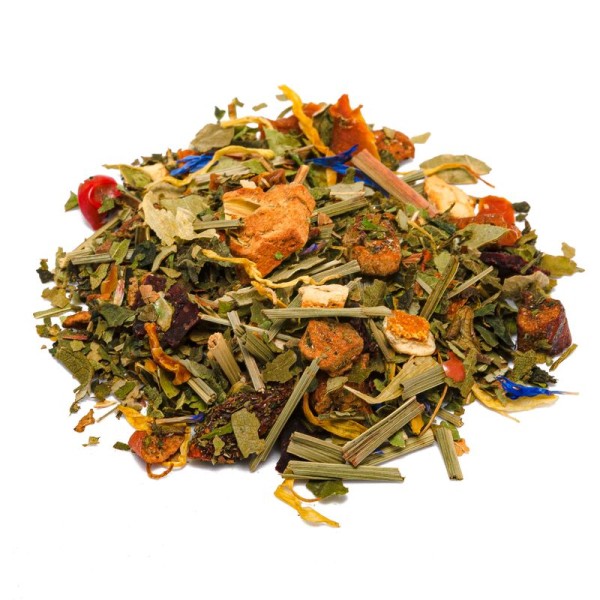









 No reward points for this product.
No reward points for this product.
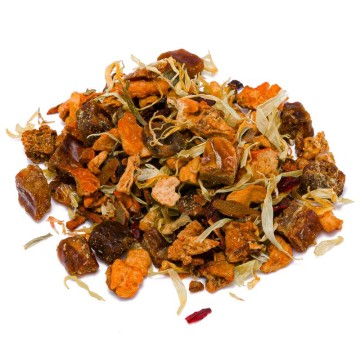
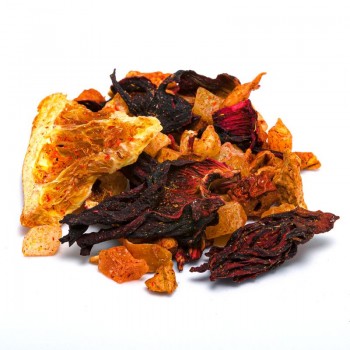
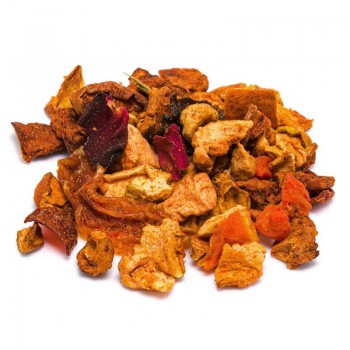
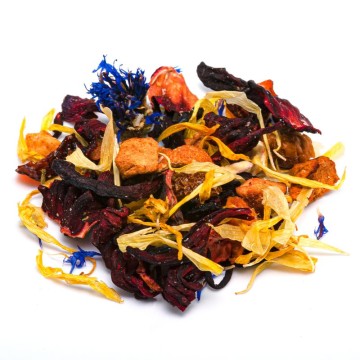
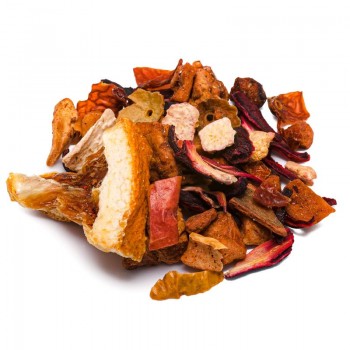
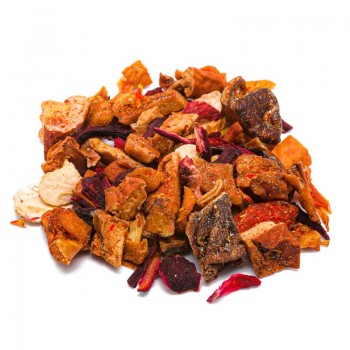
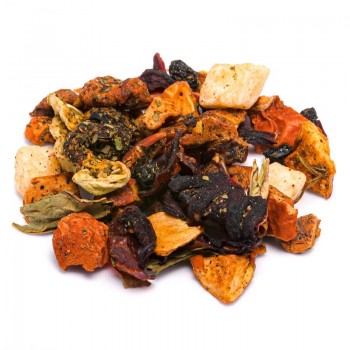
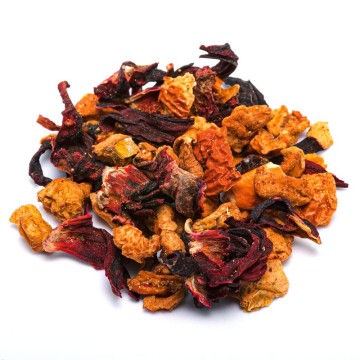
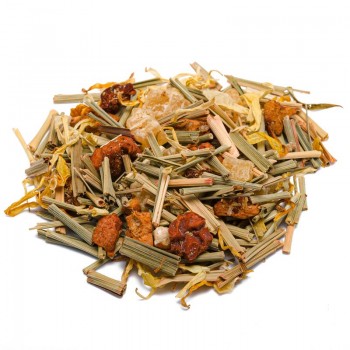
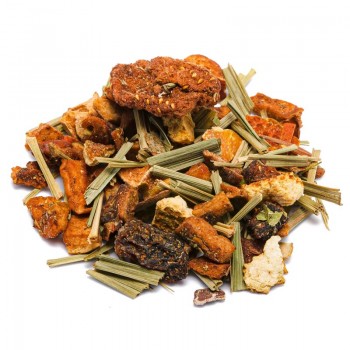
![infuso pesca melone [Natura d'Oriente]](https://www.naturadoriente.com/3535-home_default/infused-peach-melon.jpg)
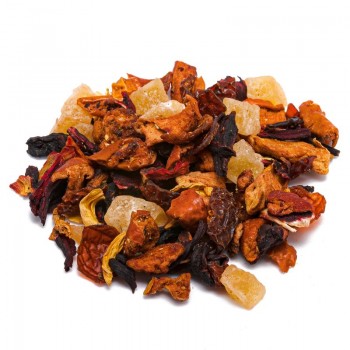

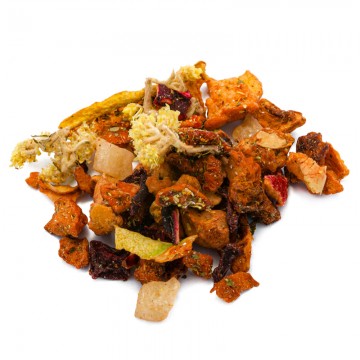
![infuso pesca e vaniglia [Natura d'Oriente]](https://www.naturadoriente.com/3538-home_default/infused-peach-vanilla.jpg)
